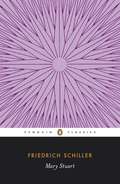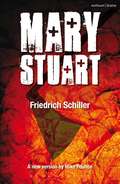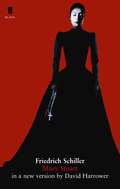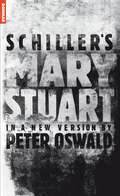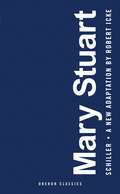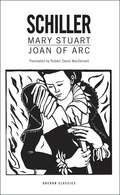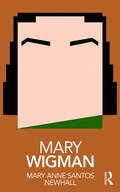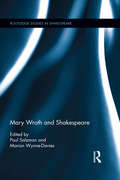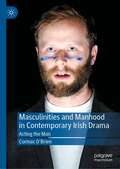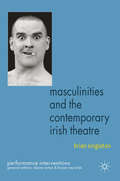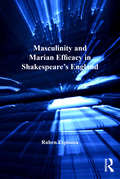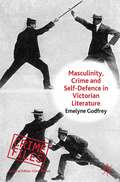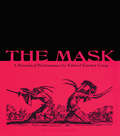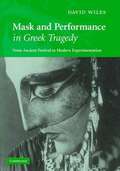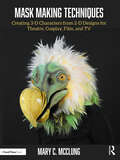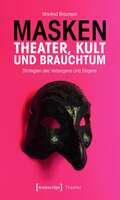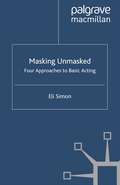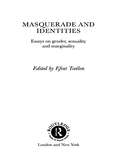- Table View
- List View
Mary Stuart: A Tragedy
by Friedrich SchillerThis dramatic story recounts Mary, Queen of Scots's remaining days held captive in Fotheringay Castle. In scenes alternating between Mary's prison and Elizabeth's court at Westminster, Schiller's play gradually builds a compelling picture of a tragic heroine rising above her suffering to gain in insight and spiritual depth. In contrast Elizabeth, in turmoil over the correct course of action for her country and trapped by the cruel demands of Realpolitik, can achieve worldly victory only at a terrible moral cost. Culminating in a fictitious meeting of the two women, Mary Stuart is a dramatic meditation on the nature of political power, but also a deeply moving human tragedy that captures the emotional essence of complex events.
Mary Stuart: A Tragedy (Modern Plays)
by Friedrich Schiller'Scotland may be a savage nation, Lady, but the English wash their hands in blood.'Mary Stuart tells the story of the personal struggle between two extraordinary women - one French, one English - both captive to the demands of sovereignty and both caught in a tumult of political and religious intrigue.Which of them is the rightful Queen of England - Mary Stuart or Elizabeth Tudor?Mary Stuart, written in 1800 by Friedrich Schiller, is presented in this new version by Mike Poulton following his Don Carlos for Sheffield/West End. The play was produced at Clwyd Theatr Cymru 7-30 May 2009.'Magnificent . . . Mike Poulton's fleet and vivid translation . . . all the deftly plotted twists and turns of a thriller. You lean forward in your seat, desperate to discover what happens next . . . a masterpiece' Daily Telegraph on Mike Poulton's version of Schiller's Don Carlos.
Mary Stuart: in a version
by Friedrich SchillerOne of European theatre's major plays, Schiller's masterpiece hinges on a brilliantly imagined meeting between Mary, Queen of Scots - focus of simmering Catholic dissent and her cousin Elizabeth, Queen of England, who has imprisoned her. Isolated by their duplicitous male courtiers, the women collide headlong, each wrestling with the rank, ambition and destiny their births have bestowed, against a thrilling background of intrigue, plot and counter-plot.David Harrower's version of Mary Stuart premiered at the Citizen's Theatre, Glasgow, in October 2006.
Mary Stuart: A Tragedy (Oberon Modern Plays)
by Friedrich Schiller Robert IckeTwo queens. One in power. One in prison. It’s all in the execution. Schiller’s political tragedy takes us behind the scenes of British history’s most famous rivalry.
Mary Stuart: Two Queens, One Empire (World's Classics)
by Friedrich Schiller Peter OswaldSchiller's play of 1800 pits Mary Queen of Scots against her rival Elizabeth of England. The meeting never happened, but Goethe claimed 'It will be good to see those whores alongside each other.' Schiller's Mary redeems her youthful crimes through an ordeal that lifts her into the realms of spiritual serenity, while Elizabeth descends deeper into rage, revenge and deception.Peter Oswald's version, mixing poetry and prose, opened at the Donmar Warehouse in London’s West End in July 2005.
Mary Stuart (Modern Plays)
by Friedrich Schiller Mike Poulton'Scotland may be a savage nation, Lady, but the English wash their hands in blood.'Mary Stuart tells the story of the personal struggle between two extraordinary women - one French, one English - both captive to the demands of sovereignty and both caught in a tumult of political and religious intrigue.Which of them is the rightful Queen of England - Mary Stuart or Elizabeth Tudor?Mary Stuart, written in 1800 by Friedrich Schiller, is presented in this new version by Mike Poulton following his Don Carlos for Sheffield/West End. The play was produced at Clwyd Theatr Cymru 7-30 May 2009.'Magnificent . . . Mike Poulton's fleet and vivid translation . . . all the deftly plotted twists and turns of a thriller. You lean forward in your seat, desperate to discover what happens next . . . a masterpiece' Daily Telegraph on Mike Poulton's version of Schiller's Don Carlos.
Mary Stuart/Joan of Arc (Oberon Modern Plays)
by Friedrich Schiller Robert David MacDonaldThese two tragedies, written at the peak of Schiller’s career as a dramatist, contain his most telling, and touching, portrayals of women. His heroines are propelled, by birth or a sense of divine mission, into exalted political positions, where their qualities as human beings, and particularly as women, are put to the severest tests, from which they emerge triumphant, but doomed. Schiller’s breadth of sentiment, combined with his consummate stagecraft, and Shakespearean mastery of verse and nobility of language, ensure his position as Germany’s greatest dramatist, and these translations, prepared for, and performed by Glasgow’s famous Citizens Company, should go far to ensure his long overdue acceptance in Britain as a master of the European Theatre.
Mary Wigman (Routledge Performance Practitioners)
by Mary Anne Santos NewhallThis book considers dancer, teacher, and choreographer Mary Wigman, a leading innovator in Expressionist dance whose radical explorations of movement and dance theory are credited with expanding the scope of dance as a theatrical art. Now reissued, this book combines: a full account of Wigman’s life and work an analysis of her key ideas detailed discussion of her aesthetic theories, including the use of space as an "invisible partner" and the transcendent nature of performance a commentary on her key works, including Hexentanz and The Seven Dances of Life an extensive collection of practical exercises designed to provide an understanding of Wigman’s choreographic principles and her uniquely immersive approach to dance. As a first step towards critical understanding, and as an initial exploration before going on to further, primary research, Routledge Performance Practitioners are unbeatable value for today’s student.
Mary Wigman: Modernity And Mary Wigman, 1886--1973 (Routledge Performance Practitioners)
by Mary Anne Santos NewhallThis book considers dancer, teacher, and choreographer Mary Wigman, a leading innovator in Expressionist dance whose radical explorations of movement and dance theory are credited with expanding the scope of dance as a theatrical art. Now reissued, this book combines: a full account of Wigman’s life and work an analysis of her key ideas detailed discussion of her aesthetic theories, including the use of space as an "invisible partner" and the transcendent nature of performance a commentary on her key works, including Hexentanz and The Seven Dances of Life an extensive collection of practical exercises designed to provide an understanding of Wigman’s choreographic principles and her uniquely immersive approach to dance. As a first step towards critical understanding, and as an initial exploration before going on to further, primary research, Routledge Performance Practitioners are unbeatable value for today’s student.
Mary Wroth and Shakespeare (Routledge Studies in Shakespeare)
by Paul Salzman Marion Wynne-DaviesOver the last twenty five years, scholarship on Early Modern women writers has produced editions and criticisms, both on various groups and individual authors. The work on Mary Wroth has been particularly impressive at integrating her poetry, prose and drama into the canon. This in turn has led to comparative studies that link Wroth to a number of male and female writers, including of course, William Shakespeare. At the same time no single volume has attempted a comprehensive comparative analysis. This book sets out to explore the ways in which Wroth negotiated the discourses that are embedded in the Shakespearean canon in order to develop an understanding of her oeuvre based, not on influence and imitation, but on difference, originality and innovation.
Mary Wroth and Shakespeare (Routledge Studies in Shakespeare)
by Paul Salzman Marion Wynne-DaviesOver the last twenty five years, scholarship on Early Modern women writers has produced editions and criticisms, both on various groups and individual authors. The work on Mary Wroth has been particularly impressive at integrating her poetry, prose and drama into the canon. This in turn has led to comparative studies that link Wroth to a number of male and female writers, including of course, William Shakespeare. At the same time no single volume has attempted a comprehensive comparative analysis. This book sets out to explore the ways in which Wroth negotiated the discourses that are embedded in the Shakespearean canon in order to develop an understanding of her oeuvre based, not on influence and imitation, but on difference, originality and innovation.
Masculinities and Manhood in Contemporary Irish Drama: Acting the Man
by Cormac O'BrienThis book charts the journey, in terms of both stasis and change, that masculinities and manhood have made in Irish drama, and by extension in the broader culture and society, from the 1960s to the present. Examining a diverse corpus of drama and theatre events, both mainstream and on the fringe, this study critically elaborates a seismic shift in Irish masculinities. This book argues, then, that Irish manhood has shifted from embodying and enacting post-colonial concerns of nationalism and national identity, to performing models of masculinity that are driven and moulded by the political and cultural practices of neoliberal capitalism. Masculinities and Manhood in Contemporary Irish Drama charts this shift through chapters on performing masculinity in plays set in both the Irish Republic and Northern Ireland, and through several chapters that focus on Women’s and Queer drama. It thus takes its readers on a journey: a journey that begins with an overtly patriarchal, nationalist manhood that often made direct comment on the state of the nation, and ultimately arrives at several arguably regressive forms of globalised masculinity, which are couched in misaligned notions of individualism and free-choice and that frequently perceive themselves as being in crisis.
Masculinities and the Contemporary Irish Theatre (Performance Interventions)
by B. SingletonIrish theatre and its histories appear to be dominated by men and their actions. This book's socially and culturally contextualized analysis of performance over the last two decades, however reveals masculinities that are anything but hegemonic, played out in theatres and other arenas of performance all over Ireland.
Masculinity and Marian Efficacy in Shakespeare's England (Women and Gender in the Early Modern World)
by Ruben EspinosaMasculinity and Marian Efficacy in Shakespeare's England offers a new approach to evaluating the psychological 'loss' of the Virgin Mary in post-Reformation England by illustrating how, in the wake of Mary's demotion, re-inscriptions of her roles and meanings only proliferated, seizing hold of national imagination and resulting in new configurations of masculinity. The author surveys the early modern cultural and literary response to Mary's marginalization, and argues that Shakespeare employs both Roman Catholic and post-Reformation views of Marian strength not only to scrutinize cultural perceptions of masculinity, but also to offer his audience new avenues of exploring both religious and gendered subjectivity. By deploying Mary's symbolic valence to infuse certain characters, and dramatic situations with feminine potency, Espinosa analyzes how Shakespeare draws attention to the Virgin Mary as an alternative to an otherwise unilaterally masculine outlook on salvation and gendered identity formation.
Masculinity and Marian Efficacy in Shakespeare's England (Women and Gender in the Early Modern World)
by Ruben EspinosaMasculinity and Marian Efficacy in Shakespeare's England offers a new approach to evaluating the psychological 'loss' of the Virgin Mary in post-Reformation England by illustrating how, in the wake of Mary's demotion, re-inscriptions of her roles and meanings only proliferated, seizing hold of national imagination and resulting in new configurations of masculinity. The author surveys the early modern cultural and literary response to Mary's marginalization, and argues that Shakespeare employs both Roman Catholic and post-Reformation views of Marian strength not only to scrutinize cultural perceptions of masculinity, but also to offer his audience new avenues of exploring both religious and gendered subjectivity. By deploying Mary's symbolic valence to infuse certain characters, and dramatic situations with feminine potency, Espinosa analyzes how Shakespeare draws attention to the Virgin Mary as an alternative to an otherwise unilaterally masculine outlook on salvation and gendered identity formation.
Masculinity, Crime and Self-Defence in Victorian Literature: Duelling with Danger (Crime Files)
by E. GodfreyNow in paperback, this book considers crime fighting from the perspective of the civilian city-goer, from the mid-Victorian garotting panics to 1914. It charts the shift from the use of body armour to the adoption of exotic martial arts through the works of popular playwrights and novelists, examining changing ideals of urban, middle-class heroism.
The Mask: A Periodical Performance by Edward Gordon Craig (Contemporary Theatre Studies #Vol. 30.)
by Olga TaxidouNo study of modern theater is complete without a thorough understanding of the enormous influence of visionary genius Edward Gordon Craig. Born in England in 1872, Craig went on to become famous world-wide as an actor, manager, director, playwright, designer, and most importantly an author and theorist, whose books were translated into German, Russian, Japanese, Dutch, Hungarian, and Danish. Although an essential parallel to the European avant-garde, Craig was often read as "exceptional" and highly innovative in his native Britain, thus, The Mask not only appears as Craig's main cosmopolitan project but also at times functions as a surrogate stage for his experiments in theater practice. The book has a comprehensive chronology, extensive notes and a bibliography making it an essential text for undergraduates, postgraduates, actors, theatre professionals, designers, directors, researchers and writers in the fields of theatre studies (especially theater set and lighting) and theater history.
The Mask: A Periodical Performance by Edward Gordon Craig
by Olga TaxidouNo study of modern theater is complete without a thorough understanding of the enormous influence of visionary genius Edward Gordon Craig. Born in England in 1872, Craig went on to become famous world-wide as an actor, manager, director, playwright, designer, and most importantly an author and theorist, whose books were translated into German, Russian, Japanese, Dutch, Hungarian, and Danish. Although an essential parallel to the European avant-garde, Craig was often read as "exceptional" and highly innovative in his native Britain, thus, The Mask not only appears as Craig's main cosmopolitan project but also at times functions as a surrogate stage for his experiments in theater practice. The book has a comprehensive chronology, extensive notes and a bibliography making it an essential text for undergraduates, postgraduates, actors, theatre professionals, designers, directors, researchers and writers in the fields of theatre studies (especially theater set and lighting) and theater history.
Mask And Performance In Greek Tragedy (PDF)
by David WilesWhy did Greek actors in the age of Sophocles always wear masks? In this book, first published in 2007, David Wiles provided the first book-length study of this question. He surveys the evidence of vases and other monuments, arguing that they portray masks as part of a process of transformation, and that masks were never seen in the fifth century as autonomous objects. Wiles goes on to examine experiments with the mask in twentieth-century theatre, tracing a tension between the use of masks for possession and for alienation, and he identifies a preference among modern classical scholars for alienation. Wiles declines to distinguish the political aims of Greek tragedy from its religious aims, and concludes that an understanding of the mask allows us to see how Greek acting was simultaneously text-centred and body-centred. This book challenges orthodox views about how theatre relates to ritual, and provides insight into the creative work of the actor.
Mask Making Techniques: Creating 3-D Characters from 2-D Designs for Theatre, Cosplay, Film, and TV
by Mary C. McClungMask Making Techniques: Creating 3-D Characters from 2-D Designs for Theatre, Cosplay, Film, and TV, introduces and demonstrates a variety of mask making materials, techniques, and styles to bring extraordinary characters to life. A foundation reference for mask making and design, the book features over 700 color photos and illustrations of different masks, as well as diagrams of construction and finishing techniques. It provides a wealth of practical information about material options, safety, how to build large- and small-scale masks, how to build armatures for appendages, options for coverings, and finishing techniques. Readers will learn how to use a wide range of materials, including latex, paper and fabric mâché, cold foam, thermoplastics, urethane, ethylene vinyl acetate (EVA) foam, resin, found objects, and organic materials. The book also provides tips on topics such as how to create rigid polyfoam head forms and three different ways to create eyes, as well as step-by-step instructions to construct 13 different masks. Mask Making Techniques is written for intermediate mask makers, students of theatrical mask making, costume crafts, and prop making courses, as well as prop builders, costume designers, and artists who create Halloween and cosplay costumes.
Mask Making Techniques: Creating 3-D Characters from 2-D Designs for Theatre, Cosplay, Film, and TV
by Mary C. McClungMask Making Techniques: Creating 3-D Characters from 2-D Designs for Theatre, Cosplay, Film, and TV, introduces and demonstrates a variety of mask making materials, techniques, and styles to bring extraordinary characters to life. A foundation reference for mask making and design, the book features over 700 color photos and illustrations of different masks, as well as diagrams of construction and finishing techniques. It provides a wealth of practical information about material options, safety, how to build large- and small-scale masks, how to build armatures for appendages, options for coverings, and finishing techniques. Readers will learn how to use a wide range of materials, including latex, paper and fabric mâché, cold foam, thermoplastics, urethane, ethylene vinyl acetate (EVA) foam, resin, found objects, and organic materials. The book also provides tips on topics such as how to create rigid polyfoam head forms and three different ways to create eyes, as well as step-by-step instructions to construct 13 different masks. Mask Making Techniques is written for intermediate mask makers, students of theatrical mask making, costume crafts, and prop making courses, as well as prop builders, costume designers, and artists who create Halloween and cosplay costumes.
Masken - Theater, Kult und Brauchtum: Strategien des Verbergens und Zeigens (Theater #125)
by Manfred BrauneckWarum verhüllen sich Menschen mit Masken und verbergen ihre Gesichter? Warum wandeln sie ihr Äußeres, um sich als anderes Wesen darzustellen - und dies schon seit frühster Zeit? Manfred Brauneck versteht diese besondere Kulturpraktik als eine conditio humana, eine anthropologische Konstante des Spiels mit den Grenzen von Innen und Außen, von Natürlichem und Künstlichem, von Intimität und Öffentlichkeit. Ausgehend von der Funktion der Masken im Theater untersucht er dieses Phänomen und erweitert seine Analysen um das Tragen von Masken im Brauchtum und bei besonderen Ritualen - denn hier hat es eine besonders essentielle Funktion: die Schaffung einer Wirklichkeit ganz eigener Art.
Masking Unmasked: Four Approaches to Basic Acting
by E. SimonActing with masks is one of the most ancient stage techniques still in use today. Masking Unmasked is a basic guide to using this ancient art to develop character and movement in four sections that correspond to mask size: Full-Face Masks, Clowning, Bag Masks, and Half-Face Masks. Each section addresses fundamental acting principles and shows how the ancient technique can be applied to the contemporary stage. It is the perfect book to use as background to traditional, non-masked acting principles. For instance, mask acting provides a great way of strengthening core acting skills. Actors in masks experience the primary goal of acting because they are required to tap into profound physical, vocal, emotional, and psychological transformations in the course of creating a character. In addition, masking promotes honest, believable, and detailed work. Illustrated profusely throughout, the hands-on exercises developed by Simon teach actors to shift cleanly between beats, execute moment-to-moment specificity, unleash creative impulses, take risks and expand character range, power and vulnerability. Masking Unmasked is a book of ancient acting techniques that are indispensable for the actor of today.
Masquerade and Identities: Essays on Gender, Sexuality and Marginality
by Efrat TseëlonMasquerade, both literal and metaphorical, is now a central concept on many disciplines. This timely volume explores and revisits the role of disguise in constructing, expressing and representing marginalised identities, and in undermining easy distinctions between 'true' identity and artifice.The book is interdisciplinary in approach, spanning a diverse range of cultures and narrative voices. It provides provocative and nuanced ways of thinking about masquerade as a tool for construction, and a tool for critique. The essays interrogate such themes as:*mask and carnival*fetish fashion*stigma of illegitimacy*femininity as masquerade*lesbian masks*cross-dressing in Jewish folk theatre*the mask in seventeenth and eighteenth century London and nineteenth century France*the voice as mask.
Masquerade and Identities: Essays on Gender, Sexuality and Marginality
by Efrat TseëlonMasquerade, both literal and metaphorical, is now a central concept on many disciplines. This timely volume explores and revisits the role of disguise in constructing, expressing and representing marginalised identities, and in undermining easy distinctions between 'true' identity and artifice.The book is interdisciplinary in approach, spanning a diverse range of cultures and narrative voices. It provides provocative and nuanced ways of thinking about masquerade as a tool for construction, and a tool for critique. The essays interrogate such themes as:*mask and carnival*fetish fashion*stigma of illegitimacy*femininity as masquerade*lesbian masks*cross-dressing in Jewish folk theatre*the mask in seventeenth and eighteenth century London and nineteenth century France*the voice as mask.
